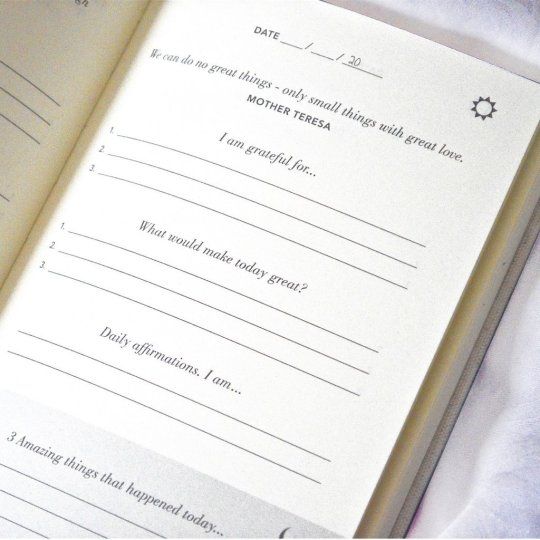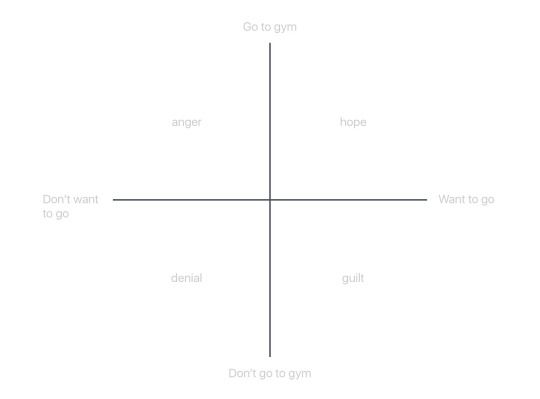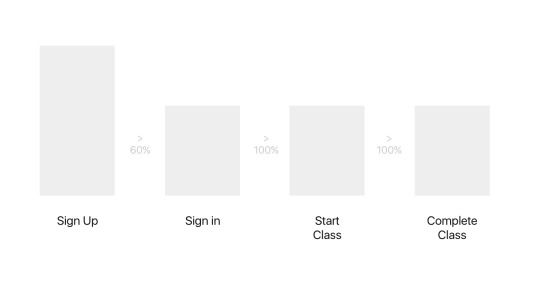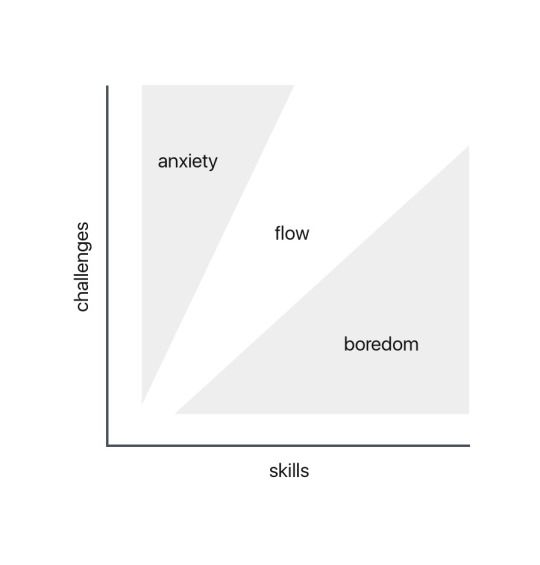Journalling

Based on my gmail history, my first journal arrived between April 15, 2015 - April 29, 2015.
It wasn’t any kind of journal, it was the ‘five minute journal’ — the brand touted as ‘life changing’ by four-hour workweek type people like Tim Ferris and Charlie Hoehn.
The landing page for the journal promises a lot of things, namely happiness. “The Five Minute Journal is your secret weapon to focus on the good in your life, become more mindful, and live with intention.”
At the time, that seemed valuable to me, or at least valuable enough to shell out 20 clams.
Journalling has been agreed to be a healthy habit, like meditating or running around the park. But I think I started to journal just to see what would happen. It didn’t spring from any specific need or breakdown.
The journal is broken into two segments, day and night, and within each segment there’s a few different prompts. I wanted to quickly run through each prompt and talk about how I used it and what I found good/bad.
Day
Date/Sun/Quote
At the top of every page there’s a new empty slot for a date, an icon of a sun and a quote. I basically ignored this section. I occasionally would scrawl the day of the week like ‘monday’, but never the date. The quotes were awful — awful in a bland, mediocre way that’s hard to describe, but makes me feel a little hollow inside — like a quote from Gandhi or Nelson Mandela or a Ted Speaker. One interesting emergent habit was if I had a really nice day, I drew a smiley face inside the shape of the sun. Moving on.
I am grateful for…
Here, I listed out three things I was grateful for. This sounds easy, is a bit more difficult in practice, but after a few weeks becomes easy again. It can be small things, things in the past, opportunities in the future, anything.
What would make to day great?
Again, three things. This wasn’t too hard to fill out, but the challenge for me was to prevent it looking my to-do list (something else I write every day). Instead, try a few simple things that make you feel a little uncomfortable like — Complimenting a stranger. Sounds stupid, especially in the morning when you just want to eat breakfast, but worth it.
Daily affirmation
Scott Adams wrote about affirmations. I agree with him that there’s something there, but I’m not exactly sure what. In a corporate environment teams will band around aspirational, motivating missions or ‘objectives’ — These really motivate complex projects and help to hit performance targets. So something like “I’m going to be a successful professional author” - is a powerful statement. I think people often use this to build up confidence too, like “I’m a good, attractive person.” - which in my opinion is a bit sad, and probably not the right way to go about things.
Night
3 Amazing things that happened today…
This was probably my favorite part of journalling. There’s a few reasons why. We forget so much stuff! I can’t tell you the number of times I really had to rack my brain to even remember what I had for lunch! There was also a loop that connected the morning question (what would make today great). Often those things ended up happening, or something better. The other insight was the type of events that I listed here. It was usually inter-personal things like a nice phone call, dinner with a friend etc.
How could I have made today better?
Finally, this caps the analytical phase, and forces you to consider your actions, in true Stoic style. I don’t love the framing of this question, but regardless, it’s an opportunity to improve your behavior. For example, “prepared more before my presentation.” These are usually small things, that will often get done next time.
Journalling isn’t for everyone.
You don’t have to be some self-optimizing freak to enjoy the practice. Like any ‘small practice’, like reading, meditation, exercise, you are not likely to experience any life changing insights, shocks or vast leaps in success.
For me, the cumulative practice, has been enjoyable, and at the very least, I have a diary of my life for the last few years.
A Measure of Motivation
“Without feedback from precise measurement, invention is doomed to be rare and erratic” - William Rosen
In honor of missing yet another workout, I’ll go one step further and say that without feedback from precise measurement, your fitness regime is doomed to be rare and erratic.
Either you show up to the gym, or you don’t.
It’s really that simple.
There will be a lot of huffing, puffing, rationalizing, post-rationalizing, motivational posters, buying of expensive apparel and creative excuses.
In other words, non-doing.

Learning from Success
On a good day, motivation is in high supply, and I have no problem doing.
• I signup for a class, usually the day of. The class schedule rarely changes, but occasionally the class fills up, so I like to put my name down beforehand.
• I showup to the gym and ‘sign in’ to the class. The coaches really make sure everyone who attends class is ‘signed in’ because it helps them track attendance.
So what does this tell me? What do I learn from this behavior?
- I’m more likely to complete a class if I signup for it beforehand. Registering my interest in the class initiates a cascade of conscious and subconscious actions and thoughts that lead me to the gym. Or so I think. For example, I’m probably less likely to book something over the gym, since its now visible in my calendar. Robert Cialdiani’s idea of ’consistency’ may also play a part. He posits that people like to be consistent with things they’ve previously said or done. Anyway, it’s slightly correlated with completing a class and it captures ‘intent’ well enough.’
2. Once I sign in, I’m highly likely to complete a class. I’m not going to turn around and go home. And by the time you’ve warmed up, you’re not even thinking about leaving. You can see in the chart below that I steamroll through the last 3 actions. Since I can only sign in when I’m physically at the gym, it’s a hard-to-fake measure of motivation.

A good measure of motivation is the conversion rate from sign-up (intent) to sign-in (action). I’m calling this the motivation score.
If you sign-in 10 times from 100 sign-ups, you’re at motivation M=0.1. If you sign-in 5 times from 8 sign-ups, you’re at motivation M=0.6
Learning from habit
Personally, I know when I’m in a highly motivated habit loop, because I really need to do the activity. If I go to the gym every Monday evening for 10 weeks in a row, I’m going to feel a negative physical feeling if I’m unable to make it.
A friend related a story which explains how extreme this feedback loop can get. She was training for a marathon, and she couldn’t stop thinking about running. She snuck out of a work party, just to keep her running habit going. She raced back to her apartment, ran 5 miles, and returned to the party filled with endorphins. Loop complete.
Habits are often touted as the key to motivation. I’ll go one step further and say a habit is an expression of high motivation. With a good habit, you are demonstrating that you are not doomed to ‘rare and erratic’ behavior. It’s regular and consistent. It’s habitual.
Learning from learning
If we’re not learning from what works and what doesn’t, we’re stuck making the same mistakes, rationalizing why you didn’t go to class (“I’m just so busy this week”), and generally being a lazy sack of shit.
Habits emerge naturally when you’ve comfortably figured out all the other messy factors.
Looking at some very simple data, like a motivation score, is one way to learn what gets you in the right zone.
The same thinking even applies for learning itself. In the graph below, tackling new challenges that are out of your skill-set, creates anxiety, and is a disincentive for learning.
If you don’t take a step back and really define what “too hard” or “too easy” means for you, it will be hard to get in a good routine and learn stuff.

Ask anyone who’s ever quantified themselves and they’ll tell you that at a high level, there’s nothing they learnt that common sense didn’t already tell them.
They slept better when they didn’t drink alcohol, or they were in a better mood when they moved around, rather than sitting in a chair all day.
But at a more personal level, closer to the metal, I’d bet they discovered 100′s of interconnected insights that helped them modify and adapt their behavior.
This is hard work. It’s about understanding/visualizing/verbalizing these obstacles (real or psychological) that get in the way of your workout.
For fitness, the hard work isn’t in the gym.
Book Review: Win Bigly
Originally posted on Goodreads.com
Boring, repetitive victory lap.
Content-wise, the way Scott writes isn’t as ‘hypnotic’ as he thinks, it’s actually quite dull, and works much better in the form of a short blog post. Many of the copywriting/sales techniques he uses get exhausting after a few pages. There’s no sale, or exciting product, just more boring chapters.
Structurally, the book roughly follows the timeline of the election, and tries to group together examples of powerful persuasion used by Trump (and Scott). Might be interesting for someone who is new to Scott’s theories, but for me, felt like a junk drawer of articles, tweets and padding.
I won’t say it’s a waste of money, since his original blog posts were fascinating (explaining Trump’s language, messaging and behavior during the primaries) — and I’m happy to throw a few dollars Scott’s way.
A few original thoughts scattered around, but nowhere near enough for this to be a decent read.
My Product Principles
Over the last few years, I’ve built up a few convictions around building software for people.
These are by no means final, and I hope to look back at this post in 6 months and cringe.
But they are what I currently believe to be important. And I rely on them daily when I make decisions. Maybe they will be useful for you.
Structurally, I’ve based these principles on how Tucker Max writes. He states that a principle should be a “clear, specific statement of action”.
What does this look like for a product person, specifically a designer?
How could you use these?
In my experience, principles are extremely flexible, and useful. That means they could influence anything from a quarterly team objective to the corner radius on a button.
One other thing.
These were not magicked out of thin air or copied from a Medium article. Fuck no.
I collect quotes, articles, diagrams, examples daily, from sources like Twitter, books, speaking to people, presentations etc. From my life. Most of these bits of ‘evidence’ go unused, but over time, I draw connections, add my own thoughts and test them out in the front lines of product development.
Here’s what has stuck:
1. Prioritize Outcomes over Output
“Product roadmaps should be lists of questions, not lists of features.” - Kent Beck
_
Notable people: John Cutler, Jeff Gothelf_
Velocity, # releases, story points can often be the wrong measurements when determining how to build something. It’s easy for teams to become factories and get obsessed with output. What really matters is the value, impact and positive outcomes our products enable for customers.
2. Problem Solve by Tinkering
“Missing a train is only painful if you run after it!” - Nassim N Taleb
Notable People: Dorian Taylor, Clayton Christensen, Venkatesh Rao, anyone doing cool stuff on GitHub_
_
If a team has a strong mission and is pointed in the right direction, great things can happen. At the work-level a bias towards experimentation, quickly throwing away ideas and moving forward, helps to uncover new possibilities and serendipitous opportunities.
3. Balance aesthetics & usability
“Design is not just what it looks like and feels like. Design is how it works.” - Steve Jobs
__Notable People: Don Norman, Rory Sutherland, Alan Cooper, literally any industrial designer or architect worth their salt_
_
Designers often treat these two things as tradeoffs. They make things pretty, and the end-user needs are ignored. I believe to be truly beautiful and pleasurable, a product has to fulfill a useful function, work well and make sense.
So those are my product principles, what are yours?
October 14, 2017 product ux ui design product development product management
Make The Name Stick & Win Big!
Welcome to the front line. The product development trenches. Priorities are oscillating. Code is releasing. Objectives are splintering into teams and tasks. Hold on. We’ve got a project to manage.
As of today, I’m actively working on 2-3 projects, all in different stages of development and ranging from small to big.
I’d like to talk about one project that’s now reaching it’s release date.
As owner, I was tasked to define the goals and plan for how the team would distribute and tackle the work over the coming weeks. The usual stuff.
With any kind of knowledge work, there’s many micro-decisions made, committed and changed daily. Most of them don’t matter much. But during the course of this particular project, I discovered one small thing that has disproportionate leverage.
The Project Name.
When I took ownership of this project, it had a drab, uninspiring, unmemorable name, (I literally can’t remember it), something like “Update recommendation system to allow for new content”.
It was sick, dying, and no one wanted to touch it, let alone get excited to work on it.
As I drafted up the initial plan, and dug into the background of the task (talked to stakeholders, poured over research), I was happy to discover that it wasn’t as feeble as it first appeared.
The project simply aimed to show the right content to the right person. Think how Netflix adapts it’s homepage based on your tastes.
That’s obvious value for the customer, and an easy sell. That’s something I could work with.
When I published the first draft of the product spec, I renamed it to “Perfect Program”. I didn’t think much of my decision, and moved onto the next steps for the project.
I won’t go into the specifics of naming here, but I can share a few of my thoughts as to what might make a good name.
The response from my team was mixed. Some didn’t know what Perfect Program was, and were confused when I started to reference it. Others thought it sounded corny. Most didn’t notice.
But slowly, over a few weeks, the name stuck. People started using it.
It ran of the tongue easily enough, and soon everyone not only knew what the project was, but were breezily referencing it in conversations. In meetings, over whiteboards, slack channels, syncs, standups, asana projects.
The project was no longer “Update recommendation system to allow for new content”. It was Perfect Program.
Aside from a catchy name, another interesting thing happened.
Since this was a more involved project, with fuzzier goals, the detail of the feature changed quite a bit as we started designing the flows and interactions.
But the name stayed the same.
In fact, the name started to grow supernatural powers, and guide our discussions, designs, and plans.
Why?
I have a hypothesis. Since “Perfect Program” neatly encapsulated the benefit to the user, as well as the technical goal of the project (a recommendation engine that works), it anchored the team and prevented us drifting too far or adding too much scope.
In other words, the name started crafting the product. Or the team started crafting the product after the name.
Imagine an imaginary project to improve a sign-up flow. There’s a million ways you might attack that problem. Some solutions might be successful, but many might lead you down the wrong path, add unnecessary complexity and take longer to ship something inferior to customers.
Instead, why not align the team around a memorable name like “Simple Signup”. The project goal, user benefit and even primary design principle are baked in. If developer B thinks its a good idea to build in a QR scanner, you might casually remind them that our job is to “simplify” the interactions for our users.
A good name also places you in the enviable “high ground” position.
When I was asked to describe the ‘point’ of the feature, I leveraged the name itself. I said something like, “based on data, our users are struggling through the onboarding process, and are forced into the wrong programs (too difficult etc). We want to find out what they like, and then show them content that’s perfect for them and their needs.
Amazon uses a similar process when developing products or features. They “work backwards” from a press release. This is a great technique to force your initiatives to truly be customer centric, rather than cranking out another feature and bolting on the customer benefit post-release.
I view a good name for a feature as the tip of the iceberg. It should summarize that imaginary press release, and the narrative should naturally flow from it, like it’s the first sentence in a story.
To summarize, a strong internal name for a product or feature may help owners in the following ways:
• Guides product teams to stay on track, acting as a project-level north star
• Saves you time. As owner, you’ll spend less time communicating the same thing to different groups.
• Compresses a lot of background information into a snappy name that can speed up conversations and brainstorms.
• Forces you not to be a lazy thinker. Jeff Bezos panned powerpoint “because he was increasingly frustrated at the lossy nature that medium.” If you can neatly describe the project in a few catchy sentences, it’s a strong, hard to fake signal that you understand the problem and what to do about it.
• Defends the project by taking a super strong, high-ground position. You are clearly communicating the value of the initiative, rather than the nuts and bolts that geeks care about.
• Potentially guides and aligns future marketing efforts to product goals, since they both share the same foundations. If your name is really good it might even be user-facing!
• Fuels morale, like a good team name might at a sports day. A month or so in, we stumbled upon an idea for an improvement. The spin-off feature would enable customers to follow multiple, or no programs if they wished. The lead dev named it “Flexible Following”, half tongue in cheek, but it was perfect! I was stoked, and the name stuck.
Ultimately, all these factors may help your team produce a better product. The name becomes fulfilling.
It goes without saying, these benefits should also apply to strategy higher than project/task level. Mission statements, quarterly objectives could all benefit greatly from being “really concise and memorable” in order to build shared understanding and context throughout the org.
Next time you have the opportunity to name an internal project, make it stick!
October 13, 2017 writing product development software agile design project management product management
You as a service
Often when we think of freelancing, it’s in terms of labor.
We sell our time by the hour, or at a project level (an estimation of hours).
I’ve never done this.
I’ve always been salaried, and never really had the interest to work on the side. Reading, learning and experimenting were all fine, but never selling my services.
But recently I’ve been thinking, if I was to freelance, what would I sell? Or more importantly, what set of skills and potential business outcomes would a professional or business pay me for? What value can I offer?
Let’s see.
Currently, I work as a product designer at a startup. We build and maintain a rails app, and apps on iOS and Android platforms.
Specifically, I discover and define user/customer goals and translate them into instructions specific enough to pass off to a programmer. I code a little bit, but is mainly as a means to communicate, really no different than creating a powerpoint.
The value for the business is mainly around the end experience for the customer. If all goes well, and I help build the right thing. “The product performs in a way which exhibits a meaningful, positive, material consequence to the user - you know, the whole reason why they pay for it.”
For me to deliver this experience to customers, I would need at least a backend/frontend dev. And realistically, I rely on many other business functions (marketing, operations).
So what’s my service?
Erik Dietrich offers one idea. Rather than selling hourly labour, figure out a niche, outcome based, productized service.
I love this idea, and would like to explore it further.
A couple of reasons why:
• This is positioning theory — You will be seen as differentiated and the ‘top of the pile’ in terms of that specific area. You won’t be compared to ‘web design’ or ‘ux design’ agencies.
• You’ll become an expert and the more work you get, the more credibility you can demonstrate to future clients.
• Operating cost drop, efficiencies improve. You are solving similiar problems every time, since you are not exposing yourself the hell that the “hey I make websites” position will find you in.
• Running a business like this also syncs up nicely with this idea of radical transparency. The internet is growing everyday, and our ability to reach millions of people has never been easier. In that world of abundance, it makes sense to focus on who you are. You don’t need to pretend to be vanilla anymore.
• If I call myself a designer, I should put my efforts into helping more businesses have access to good design. I get to “design a sliver a tiny sliver of the world, but for everyone else (I am) the user”. The reality is, libraries, rental car kiosks and tennis court booking systems, don’t have access to scrum teams.
Anyway, if you’re interested in how you might do this for yourself (it doesn’t really matter what the profession is), try out this ‘positioning’ exercise I stumbled on. It’s hard. But most important things are hard.